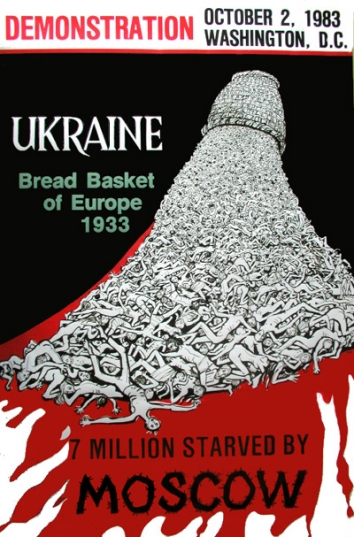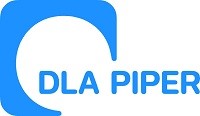Featured Galleries USUBC COLLECTION OF OVER 160 UKRAINE HISTORIC NEWS PHOTOGRAPHS 1918-1997
 Holodomor Posters
Holodomor Posters

TRANSFER PRICING RULES TO CHANGE IN UKRAINE FROM 2017
 DLA Piper Ukraine, Kyiv, Ukraine,
DLA Piper Ukraine, Kyiv, Ukraine,
Thu, Dec 29, 2016
On December 21, 2016, the Verkhovna Rada of Ukraine approved in the second reading the Draft Law "On Amending the Tax Code of Ukraine (on the Improvement of Investment Climate in Ukraine )" No. 5368 (the "Law"). The Law has been sent to the President of Ukraine for signature.
Among other changes, the Law introduces changes to the Tax Code of Ukraine with respect to transfer pricing rules ("TP"), in particular:
· extends the list of types of the controlled transactions;
· substantially increases a threshold for recognition of transactions as controlled;
· introduces principle of grouping of transactions;
· sets requirements to comparability of operations/companies;
· introduces later terms for the submission of report on controlled transactions;
· extends the list of information that must be included in TP documentation, and
· introduces new fines in the area of TP.
Changes related to TP become effective from January 1, 2017. Below is the description of the changes in more details.
Volume of controlled transactions
The threshold for the recognition of transactions as controlled transactions ("CTs") has been increased: criterion of taxpayer's annual income has been increased to UAH 150 mln (from UAH 50 mln) and criterion of taxpayer's volume of transactions with each counterparty has been increased to UAH 10 mln (from UAH 5 mln).
The definition of CTs has been broadened and now includes the following types of transactions:
· transactions for the sale and/or purchase of services via non-resident commission agents (earlier this norm existed in respect of sales of goods via non-resident commission agents only);
· transactions with non-residents who do not pay corporate profit tax and/or are not tax residents of the countries of their registration (the list of incorporation forms of such non-residents is to be approved by the Cabinet of Ministers of Ukraine).
A new criterion has been introduced for the Cabinet of Ministers of Ukraine to include states (territories) in the "low tax" list, i.e. the states whose competent authorities do not ensure timely and complete exchange of tax and financial information upon request of SFS.
It has been specified that transactions with counterparties from "low tax" states (territories) may be recognized as CTs only starting from January 1 of the year following the year of inclusion of such state (territory) into the list.
Criteria of comparability and sources of information
The provisions on comparability of transactions has been specified, in particular:
· in order to achieve comparability between CTs and non-controlled transactions now it is possible to adjust the terms and financial results of CTs (earlier the norm only provided for the possibility of adjustments on the side of non-controlled transactions);
· in case of absence or insufficient information on comparable non-controlled transactions, in order to determine profitability one can use financial information of the companies conducting activities comparable to CTs, provided that the said companies do not conduct comparable transactions with related parties.
The terms for selection of comparable companies have been also specified. One may use information on comparable companies in order to determine profitability one the following conditions are simultaneously fulfilled:
· a comparable company conducts activities comparable to the activities of the taxpayer in respect of CTs and performs comparable functions pertaining such activities (comparability of activities is determined taking into account types of economic activities under KVED DK 009:2010 and international classifiers);
· a comparable company does not have losses according to accounting (financial) statements in more than one reporting period out of all periods used for the calculation of financial indicators;
· a comparable company does not own, directly and indirectly, more than 20% of corporate rights in a different legal entity or does not have as a participant (shareholder) a legal entity with a direct/indirect participatory share of more than 20%.
The list of sources of information for TP purpose has been broadened to include the following:
· other sources, from which the taxpayer obtained information (subject to compliance with legislative requirements), and which contain information on comparable transactions and persons, provided that the taxpayer has provided such information to controlling authorities;
· information has been received by controlling authorities pursuant to international treaties concluded by Ukraine.
Grouping of transactions
A principle of "grouping" of transactions has been introduced, which provides that the taxpayer shall have the right to aggregate several CTs with one person in order to determine the compliance of terms of such CT with the "arm's length" principle. The principle of grouping may be applied if such CTs are closely interrelated or are a continuation of each other or they are of a continuous or regular nature. Such transactions may include, but are not limited to, the following transactions:
· with goods/services under long-term agreements (in particular those performed throughout the entire reporting period);
· with rights for the use of different intangibles associated with a goods/services;
· in respect of a series of closely related products (product group) and/or services;
· with different goods/services, provided that one good/service, or a group thereof, create demand for the other good/service, or a group thereof.
Calculation of market ranges and financial indicators
The rules of calculation of the range of prices / profitability have been specified:
· when calculating the range based on information on comparable non-controlled transactions of the taxpayer or its counterparty, one should only use the transactions performed in the same year as the CTs;
· when calculating the range based on information on comparable companies, one should use accounting and financial reporting data of such entities for the year when the CT was completed. In the absence of such information, one should use information for several tax periods. When using information for several years, one should calculate the average weighted profit level indicator (according to the procedure set by the Cabinet of Ministers of Ukraine).
It is specified that for calculation of the profit level indicator of a CT (or aggregation of grouped CTs) in order to estimate operational expenses and income that are directly connected with such a transaction, one must use the most justified distribution algorithm, which complies with the economic substance of the transaction and the nature of the expenses incurred or income derived.
Special rules regarding CTs with commodity goods, which are performed under forward or futures contracts, have been specified. In particular, the price range is calculated on the basis of forward or futures stock-exchange quotations for relevant goods for the period of ten days preceding the date of conclusion of respective forward or futures contract. The specified norm is applied on condition that the taxpayer notifies tax authorities (under the established form) on conclusion of such a contract using the electronic means of communication during 10 working days of the date of its conclusion.
Assessment of tax liabilities
In the course of self-adjustment in relation CT, the taxpayer calculates its tax liabilities based on the minimum or maximum level of the arm's length range (as the case may be), while the tax authorities will make such assessment based on the median of the arm's length range.
Reporting and documentation
The deadline for submission of the report on CTs is now moved to October 1 of the year following the reporting year (previously, the deadline was May 1).
The list of information to be included in the TP documentation is extended. From now on, TP documentation should additionally contain the following information (the list is not exhaustive):
· information on the entities to which the taxpayer provides local management reports;
· description of the taxpayer's management structure and its organizational chart;
· description of activities performed by the taxpayer, particularly, economic conditions of the activity, analysis of relevant markets of goods/services where the taxpayer performs its activities, major competitors;
· information on the taxpayer's participation in business restructurings or transfer of intangible assets in the reporting year or in the previous year with explanation of aspects of such transactions;
· description of the business strategy of the parties to the transactions (if any) having material impact on the prices for goods/services;
· justification of selection of the tested party, profit level indicator, comparable transactions (comparable entities) and information on sources used for analysis;
· description of the algorithm of allocation of expenses taken into account for calculation of profit level indicators in relation to several CTs.
Copies of agreements (contracts) serving as a basis for CTs are now deemed as part of TP documentation and shall be provided together with it.
It is established that the period for storage of documents and information for the purpose of TP control is 7 years.
Audits by controlling authorities
It is specified that during the course of documentary tax audit taxpayers cannot submit adjustments to report on CTs. Taxpayers are also not entitled to perform self-adjustment of prices in CTs and tax liabilities during TP audits.
The norm has been excluded, under which the materials and information received by tax authorities in the course of tax control with regard to CTs may be used during audits of other parties to such transactions.
It is specified that in the course of review of compliance of the CTs' terms to the arm's length principle the controlling authority is not entitled to apply other TP method than the one specified in the advanced pricing agreement.
Corresponding adjustment
It is established that corresponding adjustment shall be performed in accordance with the procedure and the terms envisaged by Ukraine's international agreements on avoidance of double taxation.
Penalties
The approach to imputation of TP related penalties has been changed. Now penalties are based on the living wage for persons capable of work as of January 1 of the reporting year (previously penalties were based on the minimum wage).
The list of TP penalties have been expanded to include penalties for delayed submission of reports on CTs, delayed declaration of CTs in report on CTs, delayed submission of TP documentation. The updated list of TP related penalties is presented in the table below:
|
Non-submission of report on CTs |
300 living wages |
|
Failure to declare a CT in report on CTs |
1% of the amount of the CT that was not declared in the report but not more than 300 living wages (for all undeclared CTs) |
|
Failure to submit TP documentation |
3% of the amount of the CT, for which no documentation was submitted but not more than 200 living wages for all CTs in the reporting year |
|
Failure to submit the report on CTs or TP documentation upon expiration of 30 calendar days following the last day of the deadline for payment of penalties for non-submission |
5 living wages for each calendar day of non-submission after expiration of 30 calendar days |
|
Delayed submission of report on CTs |
1 living wage for each calendar day of the delay but not more than 300 living wages |
|
Delayed declaration of the CT in report on CTs |
1 living wage for each calendar day of the delay but not more than 300 living wages |
|
Delayed submission of TP documentation |
2 living wages for each calendar day of delay but not more than 200 living wages |
For further information, please contact anyone listed below, or your usual DLA Piper contact.

















